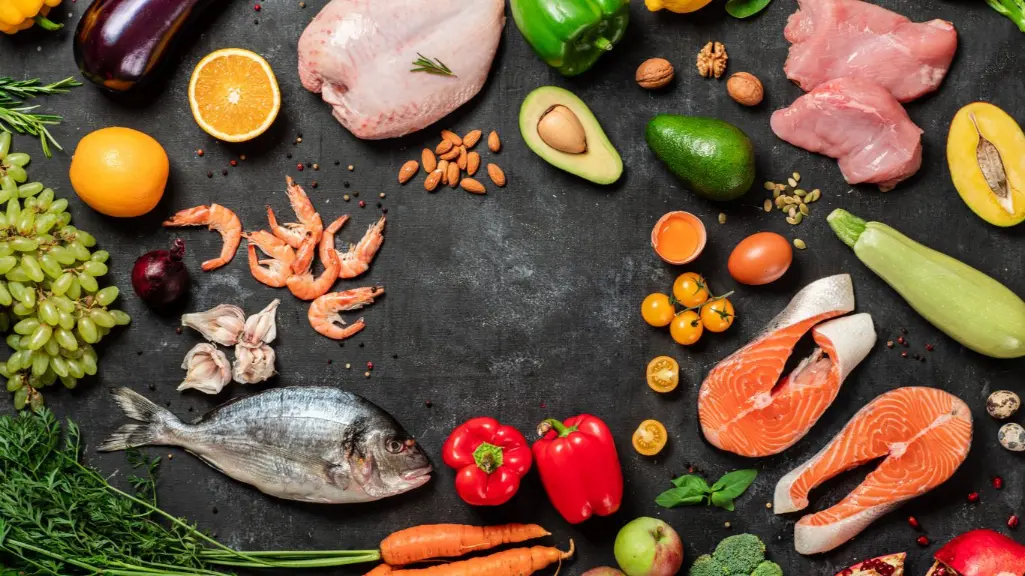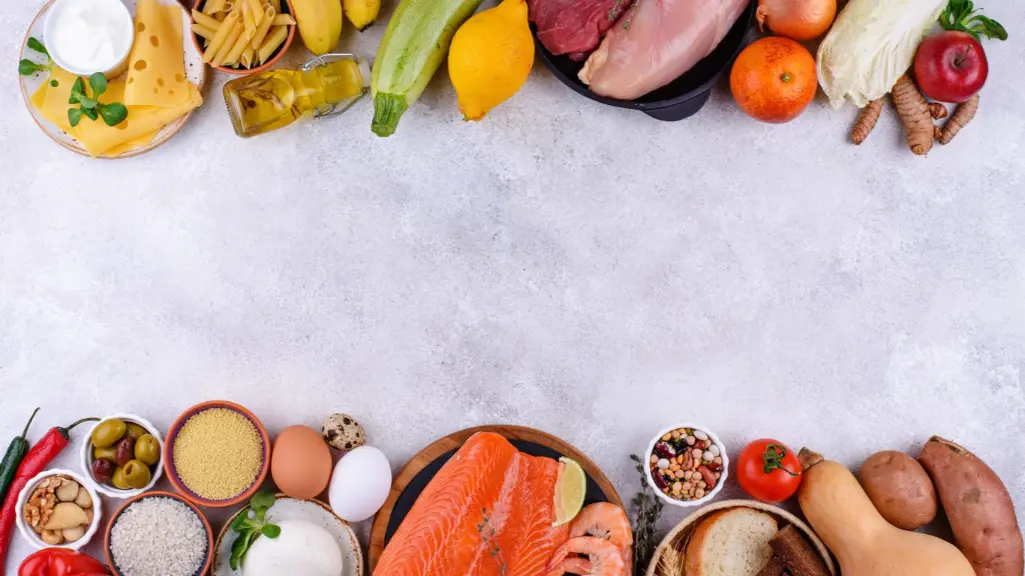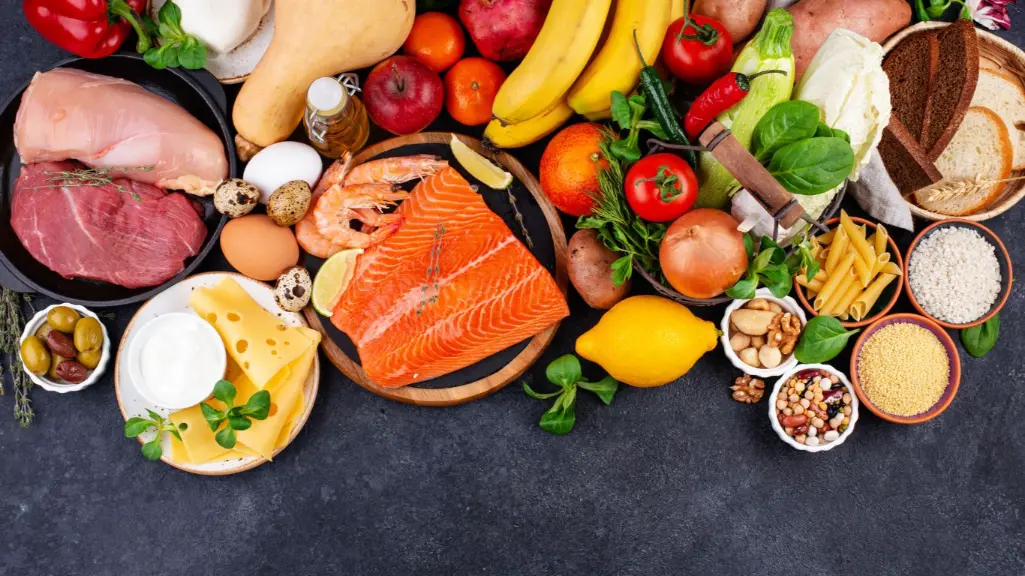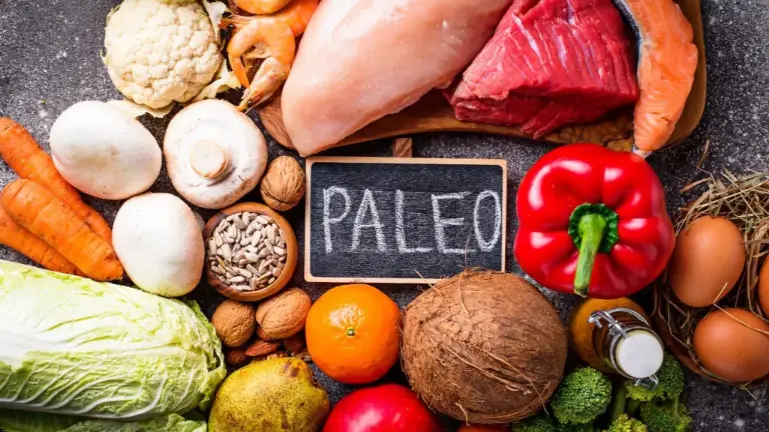Think cavemen were just grunting oafs dragging their knuckles on the ground? Think again! These prehistoric athletes were mammoths of fitness, constantly on the move and battling the elements. So, what did they eat to fuel their amazing feats? The answer might surprise you (and confuse your pizza-loving gym buddy).
Crushing Fitness Goals: How the Paleo Diet Fuels Athletes explores how ditching processed junk and embracing a diet rich in meat, fish, veggies, and nuts might just turn you into a lean, mean, calorie-burning machine! Get ready to unlock the secrets of our hunter-gatherer ancestors and unleash your inner fitness caveman (minus the fur)!

Key Takeaways:
- Paleo Power for Peak Performance: Ditch processed junk and fire up your fitness with the Paleo diet! This guide explores how eating like our hunter-gatherer ancestors can fuel your workouts and help you crush those goals.
- Natural Energy Boost: Paleo meals are packed with lean protein, healthy fats, and tons of fruits and veggies. This all-star combo gives you sustained energy to dominate your training sessions.
- Reduce Inflammation, Recover Faster: Processed foods can cause inflammation, slowing you down. Paleo meals help fight inflammation and promote faster recovery so you can get back to conquering the gym!
Nutrition for Fitness Buffs
If you’re all about smashing your fitness goals, nailing your nutrition is a must. Let’s break down two crucial parts: protein intake and macronutrient ratios.
Protein: The Muscle Builder
Protein is your best friend when it comes to muscle recovery and growth. If you’re following the paleo diet for athletes, you’ll notice it packs more protein than usual. Typically, the paleo diet has about 29.6% of your energy coming from protein, which is way above the usual 15%.
Here’s what you need if you’re an athlete:
- Endurance athletes: 1.2 to 1.4 grams per kg of body weight daily
- Strength training athletes: 1.4 to 2.0 grams per kg of body weight daily
Quick reference:
| Athlete Type | Recommended Protein Intake (g/kg) |
|---|---|
| Endurance | 1.2 – 1.4 |
| Strength Training | 1.4 – 2.0 |
Getting enough protein helps your muscles bounce back and grow. Lean meats, a staple in the paleo diet, fit the bill perfectly. For more on protein-packed plans, check out our muscle building diet plan.
Balancing Your Macros
Getting the right mix of proteins, fats, and carbs is key for any athlete. The paleo diet has a specific ratio that can boost your performance. Here’s a typical breakdown:
| Macronutrient | Percentage of Total Energy Intake |
|---|---|
| Protein | 29.6% |
| Fat | 40% |
| Carbs | 30.4% |
Dr. Cordain’s research on paleolithic nutrition suggests our bodies thrive on foods like veggies, fruits, and lean meats, which have been around for ages (TrainingPeaks).
Athletes might need to tweak these ratios around workouts. Sometimes, adding non-paleo foods like pasta or rice can help keep energy levels high and speed up recovery.
For more on meal planning around workouts, visit our guide on meal planning for athletes.
By understanding your protein needs and macronutrient ratios, you can fuel your performance and recovery. For more tips on post-workout nutrition, check out our post-workout meal ideas.
The Paleo Diet for Athletes

Why Go Paleo?
I’ve always been intrigued by how the Paleo diet for athletes can boost performance. Dr. Loren Cordain and Joe Friel, in their book “The Paleo Diet for Athletes,” argue that our bodies haven’t changed much in the last 10,000 years, making us still Paleolithic athletes.
Here are some perks of the Paleo diet for fitness enthusiasts:
- More Energy: Whole, unprocessed foods give you steady energy without the sugar crashes.
- Better Recovery: Nutrient-rich foods help your muscles recover after tough workouts.
- Less Inflammation: Cutting out processed foods and grains can reduce inflammation, which is crucial for athletes.
- Improved Body Composition: The diet’s typical macronutrient ratios (30% protein, 30% carbs, 40% fats) can help build muscle and lose fat (NASM).
Tweaking Paleo for Workouts
If you’re hitting the gym hard, you might need to adjust the Paleo diet to meet your energy and recovery needs. Serious athletes may need to tweak their diet around exercise times to keep up with high energy demands and quick recovery.
Pre-Workout Nutrition:
- Go for moderate-to-high-glycemic-load carbs to fuel your workout. Think bananas and sweet potatoes.
- Add some protein to maintain muscle. Eggs or chicken breasts work great.
During Workout:
- For long or intense workouts, consider small amounts of easy-to-digest carbs like dates or a homemade electrolyte drink.
Post-Workout Nutrition:
- The first 30 minutes post-workout are crucial. A recovery drink with carbs and protein can help. Try a homemade Paleo recovery smoothie (TrainingPeaks).
- Include moderate-to-high glycemic load carbs and protein for extended recovery. Sometimes, non-paleo foods like pasta or rice are necessary for quick carb recovery.
| Meal Timing | Recommended Foods |
|---|---|
| Pre-Workout | Banana, sweet potato, eggs, and chicken breast |
| During Workout | Dates, homemade electrolyte drink |
| Post-Workout | Paleo recovery smoothie, pasta, rice, protein source |
Adapting the Paleo diet to your fitness routine can make a big difference in your performance and recovery. For more meal plans and ideas, check out our muscle building diet plan and post-workout meal ideas. Curious about other diets? Check out our article on the vegan diet for fitness.
Meal Timing and Recovery
Pre- and Post-Workout Nutrition
Timing your meals around workouts is key for peak performance and recovery. Before a workout, I usually eat a balanced meal with protein and moderate- to high-glycemic-load carbs. This fuels my body for the intense exercise ahead.
Pre-Workout Meal Example:
| Food | Portion Size | Carbs (g) | Protein (g) | Fat (g) |
|---|---|---|---|---|
| Sweet Potato | 1 medium | 24 | 2 | |
| Chicken Breast | 3 oz | 26 | 2 | |
| Avocado | 1/2 | 12 | 2 | 15 |
Post-workout nutrition is just as important, especially within the first 30 minutes after exercising. This is the critical recovery window. I aim for a recovery drink or a homemade Paleo smoothie with carbs and protein. This helps replenish glycogen and repair muscle.
Post-Workout Smoothie Recipe:
- 1 banana
- 1 cup almond milk
- 1 scoop paleo-friendly protein powder
- 1 tablespoon honey
For extended recovery after a tough workout, I sometimes include non-paleo foods like pasta, bread, or rice to boost carbs. This helps in the carb recovery process, essential for sustained energy (TrainingPeaks).
For more post-workout meal ideas, check out our post-workout meal ideas.
Hydration: The Unsung Hero
Staying hydrated is crucial for maintaining performance. A 3% drop in body fluids can cause a 10–20% dip in performance (Breaking Muscle). I aim to drink half my body weight in ounces of water daily, adjusting for workout intensity and heat.
Hydration Guidelines:
| Weight (lbs) | Baseline Fluid Intake (oz) | Additional Intake (oz) |
|---|---|---|
| 150 | 75 | Varies based on activity level |
| 200 | 100 | Varies based on activity level |
Hydration isn’t just about water; it’s also about replenishing electrolytes lost through sweat. I like to include natural electrolyte sources like coconut water and potassium-rich foods like bananas.
For more on meal planning and hydration, visit our section on meal planning for athletes.
By focusing on meal timing and hydration, I can maximize my performance and recovery on the Paleo Diet. If you’re interested in other diets, check out our article on the vegan diet for fitness.
How the Paleo Diet Changes Athletes

Body Composition
When I started the Paleo diet, I noticed big changes in my body. The diet, which focuses on whole foods like lean meats, fruits, veggies, and nuts, can significantly impact body metrics. A study on pro handball players found that an eight-week Paleo diet led to decreases in body mass, BMI, and fat mass and an increase in fat-free mass (NCBI).
Here’s a quick look:
| Metric | Before Paleo Diet | After Paleo Diet |
|---|---|---|
| Body Mass (kg) | 80 | 76 |
| BMI | 25 | 23 |
| Fat Mass (kg) | 20 | 17 |
| Fat-Free Mass (kg) | 60 | 59 |
These changes can be super motivating if you’re looking to improve your fitness and body composition. For more on aligning your diet with muscle-building goals, check out our muscle building diet plan.
Performance: Aerobic vs. Anaerobic
When it comes to performance, the Paleo diet has mixed results. The same study found that while the diet doesn’t hurt aerobic capacity, it can slightly affect anaerobic capacity.
In simpler terms, my endurance for long runs and cardio workouts didn’t change much, but my short bursts of intense activity, like sprints, saw a slight dip.
| Capacity Type | Impact of Paleo Diet |
|---|---|
| Aerobic Capacity | No significant change |
| Anaerobic Capacity | Slight adverse effect |
So, if you’re into endurance, the Paleo diet could be a good fit. But if your training involves a lot of high-intensity intervals, you might notice a slight drop in performance.
For meal planning around workouts, our article on meal planning for athletes has great tips. And for post-exercise meal ideas, don’t miss our post-workout meal ideas.
By understanding how the Paleo diet affects body composition and performance, you can make informed decisions to crush your fitness goals. If the Paleo diet isn’t your thing, explore other options, like a vegan diet for fitness to see what works best for you.
🏋️♀️ Crushing Fitness Goals: How the Paleo Diet Fuels Athletes 🥗

1. What is the main focus of the Paleo diet for athletes? 🤔

2. How does the Paleo diet change during different training periods? 🏃♂️

3. What is the dominant fuel source for high-intensity exercise? 💪

4. What is a potential challenge for athletes on the Paleo diet? 🍳

5. What is a key benefit many people report from switching to a Paleo diet? 🌿
As a veteran fitness technology innovator and the founder of GearUpToFit.com, Alex Papaioannou stands at the intersection of health science and artificial intelligence. With over a decade of specialized experience in digital wellness solutions, he’s transforming how people approach their fitness journey through data-driven methodologies.
